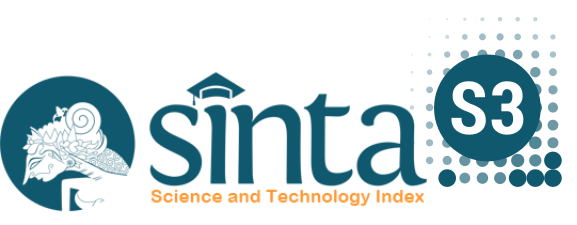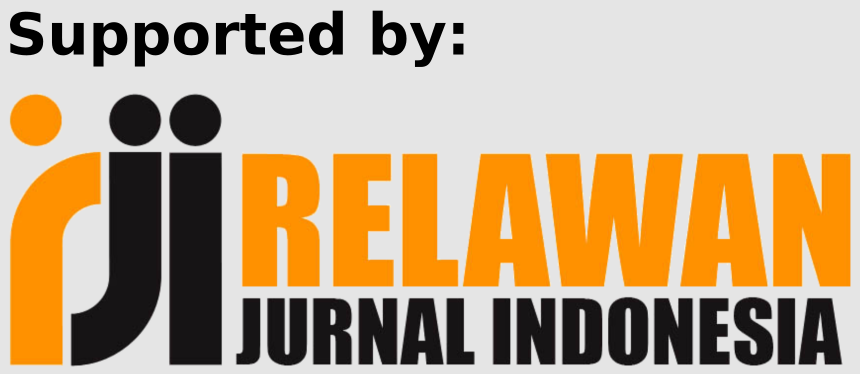The relationship of the maternal-fetal attachment and the attitude toward exclusive breastfeeding among pregnant women in Indonesia
DOI:
https://doi.org/10.31101/jhtam.1324Abstract views 2194 times
Keywords:
pregnancy, maternal-fetal attachment, attitude, exclusive breastfeeding,Abstract
Downloads
References
Ayub, N. (2014). Development of marital satisfaction scale. Pakistan Journal of Clinical Psychology, 9(1), 19–34.
Babakazo, P., Donnen, P., Akilimali, P., Mapatano, N., Ali, M., & Okitolonda, E. (2015). Predictors of discontinuing exclusive breastfeeding before six months among mothers in Kinshasa : a prospective study. International Breastfeeding Journal, 10(19), 1–10. https://doi.org/10.1186/s13006-015-0044-7
Bohner, G., & Dickel, N. (2011). Attitudes and Attitude Change. Annual Review Psychologhy, 62, 391–417. https://doi.org/10.1146/annurev.psych.121208.131609
Brady, A. (2017). Fathers and breastfeeding: Attitudes, involvement and support. British Journal of Midwifery, 25(7). https://doi.org/https://doi.org/10.12968/bjom.2017.25.7.426
Brislin, R. W. (1986). The wording and translation of research instruments: In: Lonner WJ, Berry JW. (Eds.). Field methods in cross-cultural research. Sage.
Cristin Malm, M., Hildingsson, I., Christine, R., Radestard, I., & Lindgren, H. (2016). Prenatal attachment and its association with foetal movement during pregnancy – A population based survey. Women and Birth, 29, 482–486. https://doi.org/10.1016/j.wombi.2016.04.005
Doan, H. M., & Zimerman, A. (2008). Prenatal Attachment: A Developmental Model. Int. J. Prenatal and Perinatal Psychology and Medicine, 20(1), 20–28.
Health Ministry of Central Borneo. (2017). Health Profile of Palangka Raya.
Huang, H., Wang, S., Chen, C. (2004). Body Image, Maternalâ€Fetal Attachment, and Choice of Infant Feeding Method: A Study in Taiwan. Birth Issue in Perinatal Care, 31(3). https://doi.org/https://doi.org/10.1111/j.0730-7659.2004.00303.x
Inoue, M., Binns, C., Katsuki, Y., & Ouchi, M. (2013). Japanese mothers’ breastfeeding knowledge and attitudes assessed by the Iowa Infant Feeding Attitudes Scale. Asia Pacific Journal Clinicial Nutrition, 22(2), 261–265. https://doi.org/doi: 10.6133/apjcn.2013.22.2.08
Jain, V. (2014). 3D Model of Attitude. International Journal of Advanced Research in Management and Social Sciences, 3(March).
Jones, P. ., Lee, J. ., Philips, L. ., Zhang, S. ., & Jaceldo, K. . (2001). An adaptation of Brislin’s translation model for cross-cultural research. Nursing Research, 50, 300–304.
Lee, J. W., & Phillips, L. R. (2001). An Adaptation of Brislin ’ s Translation Model. 50(January 2016), 300–304. https://doi.org/10.1097/00006199-200109000-00008
Maneesriwongul, W., & Dixon, J. K. (2004). Instrument translation process: a methods review. Journal of Advanced Nursing, 48(2), 175–186. https://doi.org/10.1111/j.1365-2648.2004.03185.x
Ministry of Health. (2018). Data dan Informasi - Profil Kesehatan Indonesia (Data and Information - Indonesia Health Profil). 1–184. https://doi.org/10.1037/0022-3514.51.6.1173
Muller, M. E., & Mercer, R. T. (1993). Development of the Prenatal Attachment Inventory. Western Journal of Nursing Research, 15(2), 199–215. https://doi.org/https://doi.org/10.1177/019394599301500205
Pradanie, R. (2015). Paket dukungan terhadap breastfeeding self-efficacy dan keberhasilan menyusui pada ibu postpartum. Jurnal Ners, 10(1), 20–29.
Primo, C. ., Nunes, B. ., Lima, E. F., Leite, F. ., Pontes, M. ., & Brandão, M. A. . (2016). Which factors influence women in the decision to breastfeed? Invest Educ Enferm, 34(1), 198–210. https://doi.org/DOI: 10.17533/udea.iee.v34n1a22
Rahayu, D. (2018). Hubungan Breastfeeding Self Efficacy Dengan Keberhasilan Pemberian ASI Eksklusif. Jurnal Ilmu Kesehatan, 7(1), 247–252.
Sharmin, L., Chowdhury, M. A. K., Khatun, S., & Ahmed, N. (2016). Barriers to Exclusive Breastfeeding among Urban Mothers. Journal of Enam Medical College, 6, 88. https://doi.org/10.3329/jemc.v6i2.27763
Suryaningsih, E. K. (2015). Indonesian Version of Prenatal Attachment Inventory (PAI): A Preliminary Study. National Taipei University of Nursing and Health Sciences.
Tafazoli et, A. (2014). Relationship between Prenatal Attachment and Duration of Exclusive Breast Feeding in Primiparous Women. J Neyshabur Univ Med Sci 2014, 2(3), 67–75. http://journal.nums.ac.ir/article-1-54-en.html
World Health Organization. (2018). Process of translation and adaptation of instruments.
Zhao, J., Ph, M., Candidate, D., Zhao, Y., Senior, P. D., Du, M., Binns, W., John, P. D., Distinguished, C., Lee, A. H., & Ph, D. (2017). Maternal education and breastfeeding practices in China : A systematic review and meta-analysis. Midwifery, 50(March), 62–71. https://doi.org/10.1016/j.midw.2017.03.011
Downloads
Published
How to Cite
Issue
Section
License
Authors who publish with Journal of Health Technology Assessment in Midwifery agree to the following terms:
- Authors retain copyright and grant the journal right of first publication with the work simultaneously licensed under a Creative Commons Attribution License (CC BY-SA 4.0) that allows others to share the work with an acknowledgment of the work's authorship and initial publication in this journal.
- Authors are able to enter into separate, additional contractual arrangements for the non-exclusive distribution of the journal's published version of the work (e.g., post it to an institutional repository or publish it in a book), with an acknowledgment of its initial publication in this journal.
- Authors are permitted and encouraged to post their work online (e.g., in institutional repositories or on their website) prior to and during the submission process, as it can lead to productive exchanges, as well as earlier and greater citation of published work.

Journal of Health Technology Assessment in Midwifery is licensed under a Creative Commons Attribution-ShareAlike 4.0 International License..













